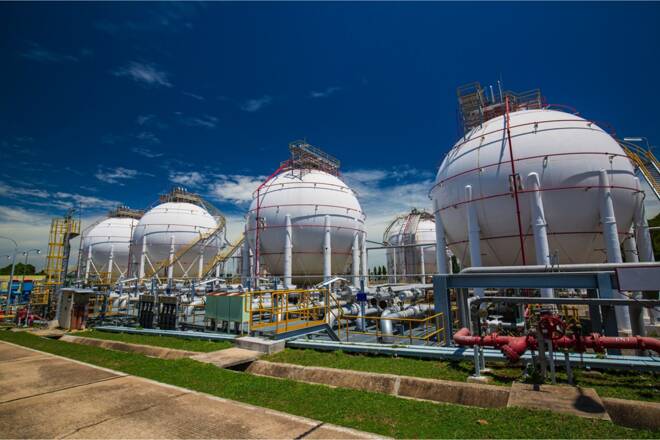Advertisement
Advertisement
Natural Gas Price Fundamental Daily Forecast – Higher as Cold Weather Forecasts Offset EIA Storage Worries
By:
Today’s EIA storage report is estimated to show a draw anywhere from 8 Bcf to 60 Bcf, putting it in a position to flip back to a surplus shortly.
Natural gas futures are edging higher on Thursday for a second straight session amid forecasts for colder weather and higher heating demand over the next two weeks. The news is spooking short-sellers into covering positions after prices fell to a five-week low on Tuesday. Traders are also awaiting the release of the weekly government storage report.
At 13:07 GMT, February natural gas futures are trading $5.824, up $0.101 or +1.76%. On Wednesday, the United States Natural Gas Fund ETF (UNG) settled at $17.75, up $1.36 or +8.30%.
Short-Term Weather Outlook
According to NatGasWeather, prices are moving higher after both the Global Forecast System (GFS) and European Centre models reversed and trended 15-20 heating degree days (HDD) colder. Although a revision was largely expected by traders, the amount of demand added back into the outlook likely was more than the natural gas markets were expecting.
Natural Gas Intelligence (NGI) reported that NatGasWeather cautioned that after multiple instances in which the temperature outlook trended warmer after once being significantly colder, the market appeared to be cautious in not giving the latest models too much credit.
The latest data showed overnight lows plunging below zero across most of the northern half of the country during the Dec. 16-21 period. The southern United States also could see overnight temperatures slide into the 20s and 30s.
Energy Information Administration Weekly Storage Report
Today’s EIA storage report, due to be released at 15:30 GMT, is estimated to show a draw anywhere from 8 Bcf to 60 Bcf for the week-ending Dec. 2. Last year, the EIA recorded a 59 Bcf decrease in storage during the similar week last year and the five-year average decline of 49 Bcf.
NGI is reporting that a Wall Street Journal survey of 14 analysts averaged a withdrawal of 30 Bcf. A Bloomberg survey showed estimates as low as 8 Bcf with a median of 31 Bcf, while a Reuters’ poll produced a median 27 Bcf withdrawal. NGI modeled a 25 Bcf decline in stocks.
As of Nov. 25, total working gas in storage stood at 3,483 Bcf, which was 89 Bcf below year-earlier levels and 86 Bcf below the five-year average.
Short-Term Outlook
After falling more than 350 Bcf below the five-year average at the end of summer, stocks are poised to flip back to a surplus in the next couple of weeks, according to NatGasWeather.
Technically, it’s still a little too early to think about a change in trend especially since there is no support base.
Furthermore, the market still has to fill the gap at 6.052 to 6.621 first before it will have a shot at the short-term target at $6.757 – $7.092.
Meanwhile, given the erratic weather pattern around Dec. 16-21, there is still risk to the downside. This means a plunge into the two main bottoms at $4.412 – $3.961 is still in play.
For a look at all of today’s economic events, check out our economic calendar.
About the Author
James Hyerczykauthor
James Hyerczyk is a U.S. based seasoned technical analyst and educator with over 40 years of experience in market analysis and trading, specializing in chart patterns and price movement. He is the author of two books on technical analysis and has a background in both futures and stock markets.
Did you find this article useful?
Latest news and analysis
Advertisement
